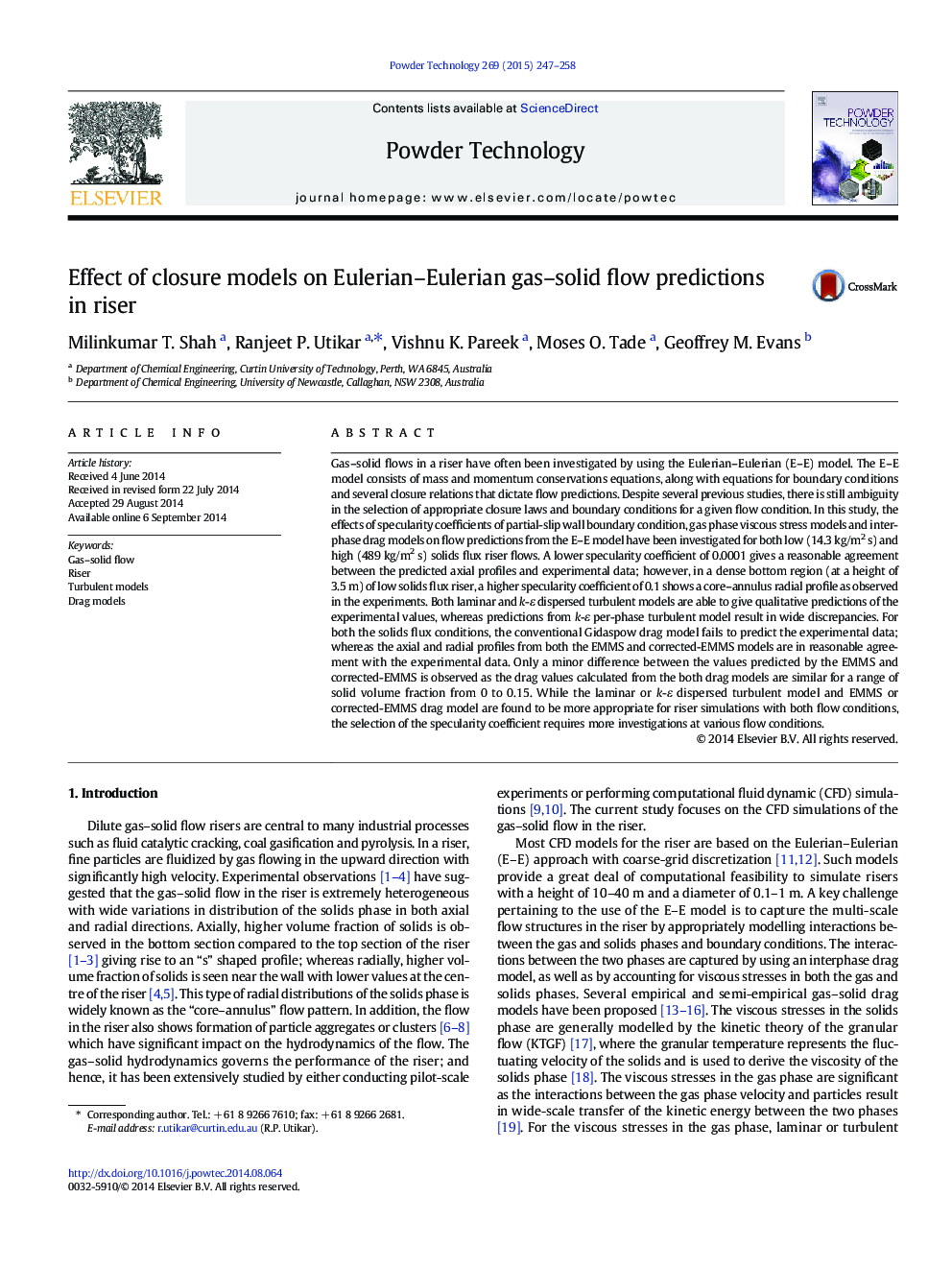| کد مقاله | کد نشریه | سال انتشار | مقاله انگلیسی | نسخه تمام متن |
|---|---|---|---|---|
| 235860 | 465651 | 2015 | 12 صفحه PDF | دانلود رایگان |

• Dilute gas-solid in riser is simulated for high and low flux conditions.
• Effects of specularity coeff., viscous stress models and drag models are studied.
• Specularity coefficient of 0.0001 qualitatively predicts distributions of solids.
• Laminar and k-ε-dispersed models show “cluster” like solids flow structures.
• Drag models based on EMMS capture axial and radial heterogeneity of the riser flow.
Gas–solid flows in a riser have often been investigated by using the Eulerian–Eulerian (E–E) model. The E–E model consists of mass and momentum conservations equations, along with equations for boundary conditions and several closure relations that dictate flow predictions. Despite several previous studies, there is still ambiguity in the selection of appropriate closure laws and boundary conditions for a given flow condition. In this study, the effects of specularity coefficients of partial-slip wall boundary condition, gas phase viscous stress models and interphase drag models on flow predictions from the E–E model have been investigated for both low (14.3 kg/m2 s) and high (489 kg/m2 s) solids flux riser flows. A lower specularity coefficient of 0.0001 gives a reasonable agreement between the predicted axial profiles and experimental data; however, in a dense bottom region (at a height of 3.5 m) of low solids flux riser, a higher specularity coefficient of 0.1 shows a core–annulus radial profile as observed in the experiments. Both laminar and k-ε dispersed turbulent models are able to give qualitative predictions of the experimental values, whereas predictions from k-ε per-phase turbulent model result in wide discrepancies. For both the solids flux conditions, the conventional Gidaspow drag model fails to predict the experimental data; whereas the axial and radial profiles from both the EMMS and corrected-EMMS models are in reasonable agreement with the experimental data. Only a minor difference between the values predicted by the EMMS and corrected-EMMS is observed as the drag values calculated from the both drag models are similar for a range of solid volume fraction from 0 to 0.15. While the laminar or k-ε dispersed turbulent model and EMMS or corrected-EMMS drag model are found to be more appropriate for riser simulations with both flow conditions, the selection of the specularity coefficient requires more investigations at various flow conditions.
Figure optionsDownload as PowerPoint slide
Journal: Powder Technology - Volume 269, January 2015, Pages 247–258